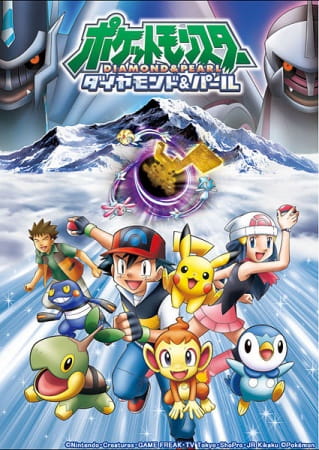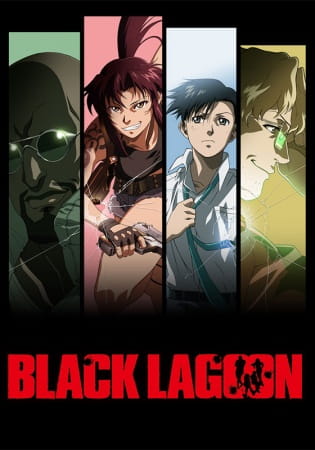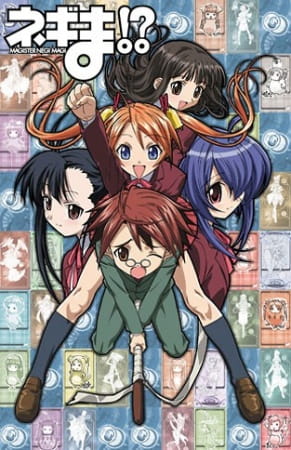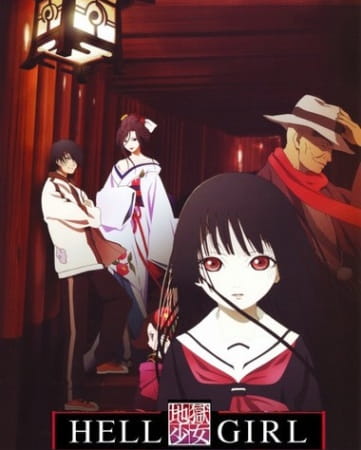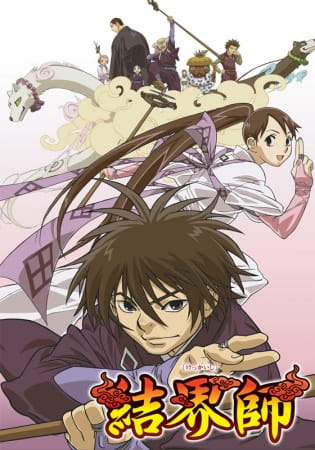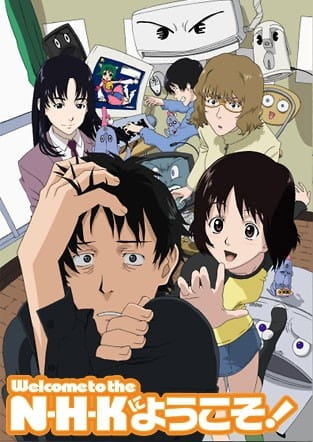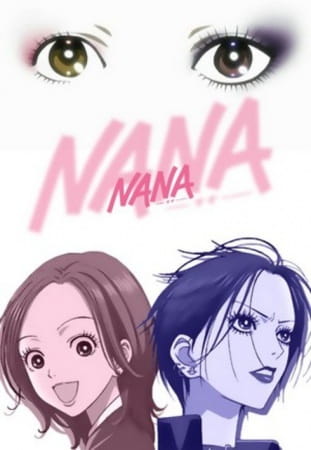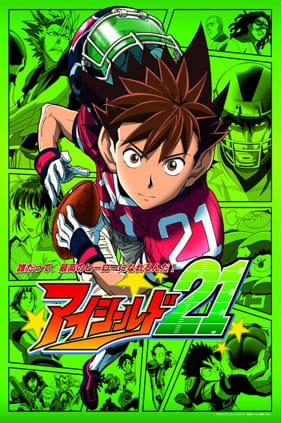01. Code Geass - Hangyaku no Lelouch
The Empire of Britannia has invaded Japan using giant robot weapons called Knightmare Frames. Japan is now referred to as Area 11, and its people the 11's. A Britannian who was living in Japan at the time, Lelouch, vowed to his Japanese friend Suzaku that he'd destroy Britannia. Years later, Lelouch is in high school, but regularly skips out of school to go play chess and gamble on himself. One day, he stumbles on terrorists 11's who've stolen a military secret and is caught by a member of the Britannian task force sent after them, who is Suzaku. As the rest of the squad arrives, Suzaku is shot for disobeying orders, while the military secret, a young girl, gives Lelouch the power of Geass, which makes anyone obey any order. While Suzaku is secretly made the pilot of Britannia's brand new prototype Knightmare, Lancelot, Lelouch becomes the masked Zero to lead the rebellion to destroy Britannia once and for all.
02. Pokemon: Diamond & Pearl
Hikari is a 10 year old girl that wants to be a top coordinator just like her mother. She recieves the starting Pokemon - Pochama, after saving it from an Ariados's attack. Meanwhile, after conquering the Battle Frontier and motivated by his old rival Shigeru, Satoshi sets off to the far away land of Shin'ou. Once there, he meets Hikari and is reunited by his old friend Takeshi. Hikari - aiming to be top coordinator, and Satoshi - aiming to be a Pokemon Master and battle in the Sinnoh League, venture in the land of Shin'ou...Meeting lots of new Pocket Monsters, "Pokemon" for short, along the way.
03. Death Note
Yagami Light is an ace student with great prospects, who's bored out of his mind. One day he finds the "Death Note": a notebook from the realm of the Death Gods, with the power to kill people in any way he desires. With the Death Note in hand, Light decides to create his perfect world, without crime or criminals. However, when criminals start dropping dead one by one, the authorities send the legendary detective L to track down the killer, and a battle of wits, deception and logic ensues...
04. D.Gray-man
Allen Walker, a young man with a cursed eye, lives to destroy a weapon known as Akuma. These weapons created by the Milleneum Earl are sent out by his command to purge the world from humans. Allen Walker uses an anti-akuma weapon, Innocence, to counter the Earl's attempts at destroying humanity. He travels to the Black Order by his mentor's directions. There he meets with others who also fight against the Milleneum Earl's plans. But more questions start to appear as Allen and his friends move further along to reach their goal. And these questions that seem to connect to Allen's past.
05. Black Lagoon
Okajima Rokuro is a Japanese businessman…in a town full of Japanese businessmen. His normal day consists of social drinking with clients and being kicked around by his bosses. He finally gets a break though, as he’s sent by his company to the tropical seas of Eastern China to deliver a disc…only his boat gets hijacked by a band of mercenaries that were hired to steal it. “Rock” (as he is newly dubbed by his captors) catches the interest of the only female merc “Revy” as she thinks he’s worth a ransom, taking him hostage. However, the disc turns out to be more trouble than its worth, and complicates things both for Rock, and the mercenaries known as Black Lagoon.
06. Negima
10-year old Negi Springfield is a wizard-in-training, and needs only to pass one more test in order to become a Master Wizard. Unfortunately, his final task is a bizarre one- to become a English teacher at an all-females boarding school. As soon as he arrives, he completely embarasses one of his students, Asuna Kagurazaka, and replaces the teacher she loves, which garners her hatred. To make matters worse, Asuna learns that Negi is a wizard,and promises to tell unless he helps her out. But, unfortunately, circumstances force them to work together to do many things, from fighting evil wizards to helping the class pass their final exam, with a lot of humor, magic, and romances thrown in.
07. Kanon
Changing schools is something Yuuchi is accustomed to, due to his parent’s profession, and with their recent venture to Africa, he is returning to his aunt’s home after 7 years. The time that has passed since his last visit has faded his memories of the people he knew, and the ties that bonded them to him, including his cousin Nayuki. Slowly those people, coincidently all being girls, find their way back to him. However, time has passed and things have happened in their own lives that sets the tone for the series. Secrets that are coming to surface, and memories that are returning to not only Yuuichi, but to those surrounding him.
08. Busou Renkin
One night, Kazuki Muto jumps in to try to save what he thinks is a girl in distress from a monster and instead gets impaled through the heart. The girl, Tokiko, is actually an alchemic warrior with a Busou Renkin, name of Valkerie Skirt, with the mission to exterminate Homunculi. She implants the only other successful work of alchemy than the Homunculus, the Kakugane, to take the place of Kazuki's heart. The Kakugane resonates with his fighting spirit and forms a Busou Renkin (in his case a spear) so he can fight the Homunculus monsters who prey on humans. Kazuki joins with Tokiko to battle with the Homunculi and protect his friends and his sister Mahiro.
09. Jigoku Shoujo [Hell Girl]
Somewhere in the vast sea of the Internet, there's a website that can only be accessed at the stroke of midnight. Known as the Jigoku Tsushin, rumor has it that if you post a grudge there, the Jigoku Shoujo will appear and drag whoever torments you into the inferno. Very little is known about the girl—all we know for sure is that she lives with her equally enigmatic grandmother, that three magical straw dolls accompany and serve her, and that whenever a posting on the Jigoku Tsushin moves her, she becomes the Jigoku Shoujo.
10. Katekyou HITMAN REBORN
Tsuna is a hapless youth with low test scores and lower self esteem. His mother hires a tutor to help Tsuna out, but it comes as a surprise to the both of them when the tutor is a baby named Reborn, claiming to be from the Mafia. Reborn informs Tsuna that he's the next heir to the Vongola family mafia family and tries to help Tsuna reach the goal. Reborn possesses the Dying Will bullet, which kills a person and brings them back to life to fulfill the last regret they had, and even works to get Tsuna some henchmen to make him a true mafia boss-in-training.
11. Kekkaishi
Yoshimori Sumimura, a 14-year-old junior high school boy, is a Kekkaishi, an exterminator of monsters. He is vying with Tokine Yumikura to be the heir to the Sumimura clan. Tokine is older than he, and she is his childhood friend as well as his rival Kekkaishi. To save people from danger, and to make himself stronger, Yoshimori fights against monsters.
12. NHK ni Youkoso! [Welcome to NHK!]
Satou Tatsuhiro, a 22 year old young man, is a NEET (Not in Employment, Education, or Training) and a hikikomori (meaning acute social withdrawal). He believes everything around him is a conspiracy, including the reason why many people, himself included, become hikikomori. Due to this, Satou creates a strange conspiracy theory which includes the Nihon Hikikomori Kyōkai (NHK), a secret organization with the intention of producing a hikikomori filled world. Satou intends to break free from the NHK's clutches, but cannot, since he finds it too frightening to go outdoors by himself; that is, until he meets Misaki Nakahara, who selects Satou for her "project" that she claims will cure him of his hikikomori ways.
13. NANA
Nana Osaki is a guarded and ambitious young woman with a strong will and a rough past. She is the vocalist for a punk band called Black Stones and she desires fame and recognition more than anything else. Nana Komatsu is an outgoing and flighty young woman with a weak will and a stable past. Her life revolves around her desire to find love and marriage. The two meet for the first time while traveling to Tokyo - in pursuit of their respective dreams - and they later decide to be roommates. Although drastically different people, the two become very close and together they find out if their biggest dreams have room for their best friend.
14. Eyeshield 21
Kobayakawa Sena is a little guy who always get picked on by the bullies in school. Since elementary school, he always play the role of the 'errand boy' to the extent that he has become swift and fast in his movements. Coincidentally, Hiruma Youichi and Kurita Ryukan are looking for a fast running back for their American Football team (Amefuto) and want to put Sena in the team. To hide their new 'star' player from the eyes of other High Schools, Hiruma encases Sena in a Amefuto helmet with a dark visor and name him Eyeshield #21.

